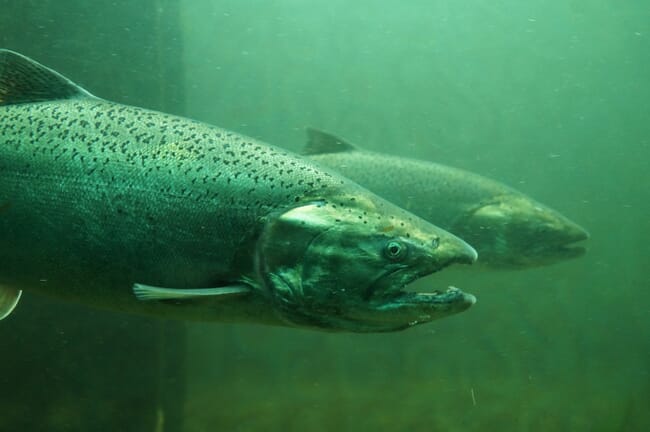The project was led by Cawthron Institute’s Kevin Heasman. Back when the $5.2m Seafood Innovation Limited funded project began in 2014, Heasman noted that little was known about the diets of king or Chinook salmon (Oncorhynchus tshawytscha) , as they make up only 0.04 percent of the world’s farmed salmon.
However, seven years later, they have gained an enormous amount of baseline knowledge about king salmon physiology, health and dietary requirements.
The initial aims of the collaboration between Cawthron scientists, industry partners New Zealand King Salmon and Seafood Innovations Limited were to improve fish nutrition, feed conversion rates, and overall fish health.
Although improving feed conversion ratio has the obvious benefit of reducing the total cost of feed, Heasman said other factors are as important.

“Our industry partners are absolutely committed to creating high-value, high-quality seafood for domestic and international consumers in line with the Government’s Aquaculture Strategy target of achieving $3 billion in annual sales by 2035,” Heasman said in a press release.
“It’s in everyone’s interest to do so in a way that prioritises fish welfare and environmental sustainability. Efficient fish tend to be healthy and produce less waste, leading to a lower environmental impact,” he added.
New Zealand King Salmon seawater manager, Mark Preece said that initially, NZKS and Cawthron worked with salmon feed experts around the world to come up with several diets they believed would be nutritionally superior, based on previous knowledge of king salmon and of the Atlantic salmon diets.
“Throughout the trial process, we tried to reduce or eliminate fishmeal in food, increase the lipid content for optimal energy and protein, and we’ve even been experimenting with finishing diets that could enhance the fish flavour.”
Heasman said the finishing diet experimentation was a fitting conclusion to this tranche of the research programme.
“We didn’t plan for it at the outset, but as the programme drew to a close we saw the opportunity, and if it works well it could create opportunities to add value to the king salmon industry by producing new products, so we’re looking forward to tasting the fish this week and seeing whether the results warrant further research and development.”
Heasman said although the project was long, and challenging, the results have made a significant impact.
“Food is the most expensive input in salmon farming, working out at up to 60 percent of the cost of raising a fish. That means if you improve your feed conversion ratio by a fraction of a percent, your savings are significant. Furthermore, happy fish grow well, increasing production.”
“For every bit of improvement we can implement in terms of the FCRs, and understanding of the digestibility of the various ingredients within diets, the more we can improve the quality of the fish, the economics of growing the fish to a final product and the speed to which you get them to harvestable size, all the while maintaining the sustainability of the product and mitigating environmental effects.”


